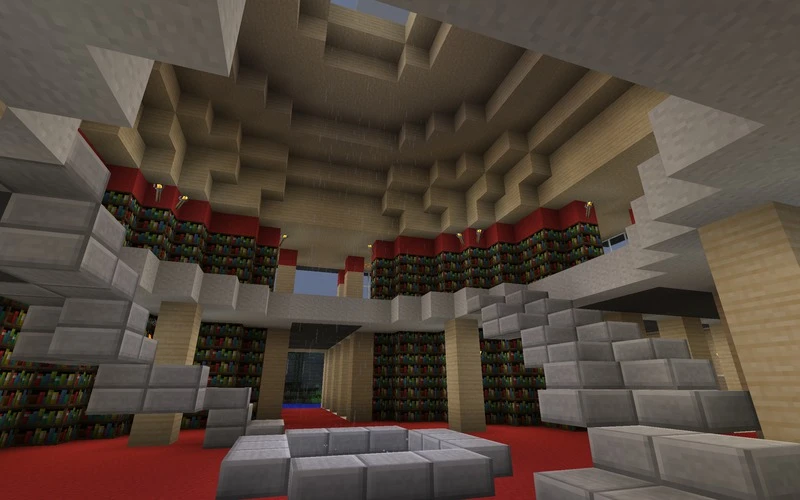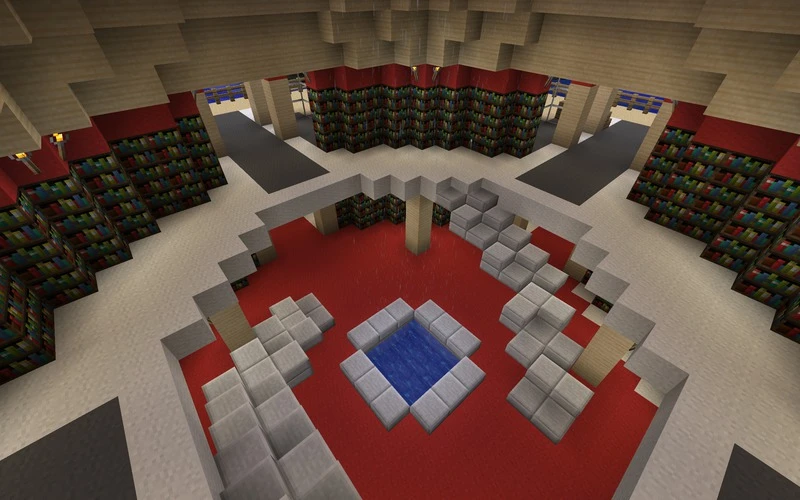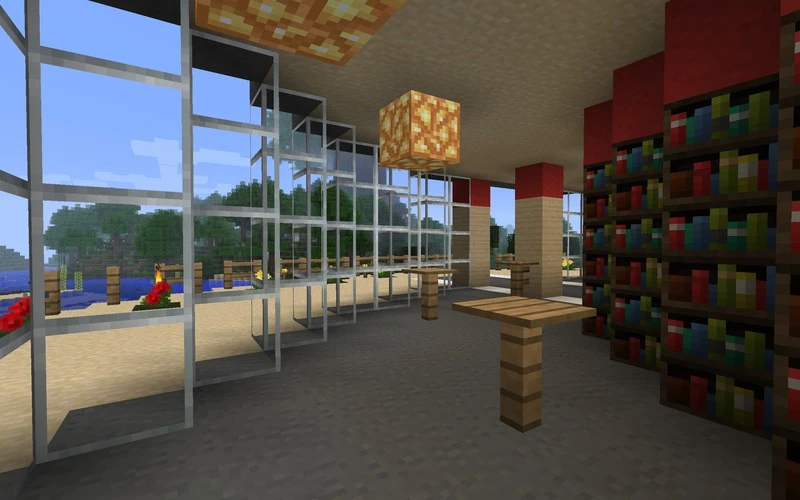Violating every principle of book conservation, CELL is a library designed to evoke the impermanence and chaos of cellular biology.

CELL is situated in the middle of a marsh (intercellular matrix); readers arrive by boat to any of four landings (alpha-hemolysin complexes).

The structure itself is supported by cobblestone pilings (microtubules) which continue into sandstone columns. Like many cells, its plan is roughly circular in shape; a minimum surface area for its enclosed volume. A circular floor plan is echoed in the sagittal plane by drawing back the second floor and capping the structure with a Roman-style dome and annulus.

The nucleus of the library is dominated by the dome; rainfall from the annulus collects in a small pool. A helical pair of staircases suggests the structure of deoxy-ribonucleic acid.

The outer quadrants serve varied purposes; from more to less enclosed. Some are for reading:

Some are designed for storage:

And some for conversation:

Convolutions of the stacks echo the endoplasmic reticulum:

At night, the east-west alignment offers spectacular views through open glass on the second floor, and from the roof garden:

Post a Comment